regions:
The home of the lemon grass is in South and Southeast Asia. Today it is cultivated in the tropics and subtropics.
| | |
Growth:
The lemon grass is a horst-forming and perennial grass. A Horst can reach up to 2 meters in diameter. There reed-like forms, light to dark green leaves with up to one meter in length. The leaves are upright and drooping at the ends. The flowers appear in many-flowered spikes, although rarely flowers are formed.
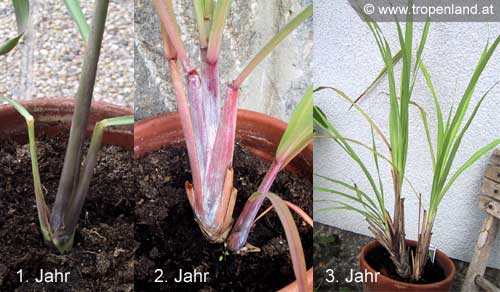 The picture shows the development of a vegetatively propagated lemon grass over a period of 3 years. In the 2nd year it starts on the right side to kick on. In the 3rd year already know it to three branches. | |
location:
| summer | A full sun says to the plant. From the Ice Saints to stay in the autumn of the outdoors is well tolerated. |
| Winter | lemongrass can not overwinter outdoors in us. The overwintering in a bright, warm place at room temperature or slightly below is tolerated. Normally it should be as moist and sunny, with moderate humidity will tolerate. |
| | |
cultivation / propagation:
The lemon grass blooms in very rare cases, thus hardly be harvestable seeds and reproduce vegetatively through division of the rootstock or the aboveground plant parts. To plant one comes to us most easily in Nurseries or fresh lemon grass, which you can always buy in supermarkets and even then rooted. Purchased parts of plants can be set for rooting in water and then later put in the ground.
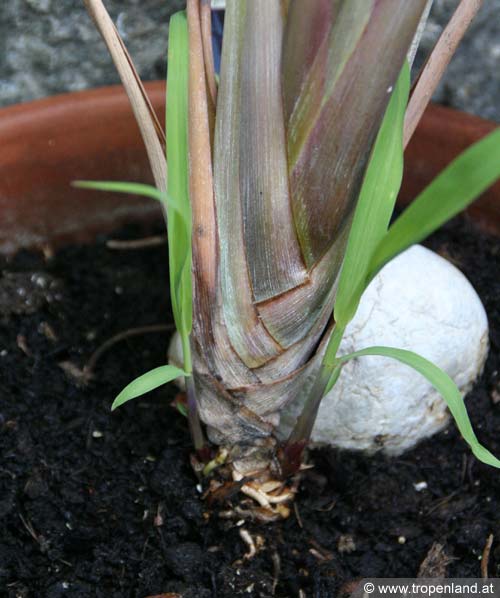 drives down the left and right, the plant from new. Where in the kitchen required, the average drive to be harvested. The substrate can | : |
substrate one regular potting soil with some sand mix. The pH value should rather be slightly acidic.
| | 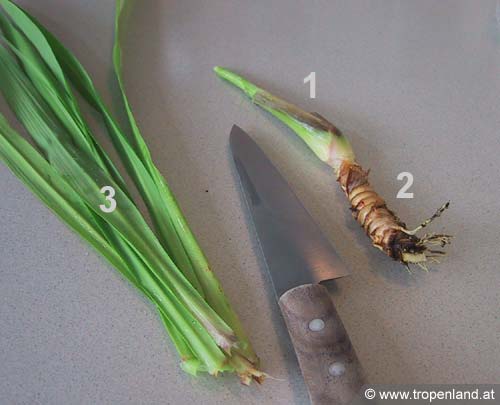 Parts 1 and 3 can be used in the kitchen. Part 2 can again be planted (see following pictures). |
casting:
best always pour strong, then let dry. Short dry periods are tolerated. However, be careful to avoid prolonged waterlogging.
| | |
fertilizing:
Small fertilizer over the summer are sufficient. You can rely on both organic and inorganic fertilizers.
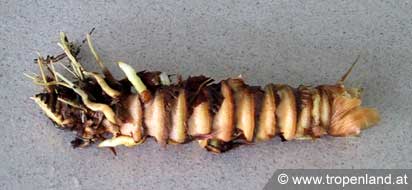 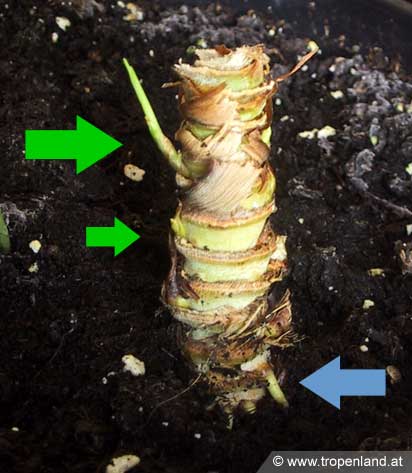 The top picture shows the remains of harvest. To plant again in this part of the earth, he drives a short time later of (green arrows). The blue arrow shows that place where the roots grow into the soil and anchor the plant. | |
fruiting / harvesting:
find use in lemon grass leaves, which are harvested in the green state of the plant. The remaining parts of the plant can remain in the ground and continue to grow.
| | |
fruit use:
The leaves are mainly used in Southeast Asian cuisine as a spice used. They are particularly suitable for seafood, fish and poultry. Best use the leaves when they are fresh, as they lose flavor in the dried state clearly. If one has no lemon on hand, it can be substituted by lemon balm. Also for spice blends, teas and refreshing drinks can be used lemongrass. Main component of the essential oil in lemongrass is citral, which is primarily responsible for the lemon-like odor. The oil is also used in the perfume and cosmetic industries. Further be attributed to the oil antibacterial and medicinal properties. cut
| | 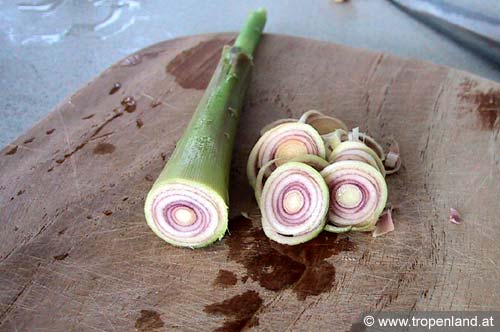 fresh flavor is best. Combinations of lemongrass us taste fish thrive. |
warning:
little careful with the leaves, since one cuts can draw.
| | 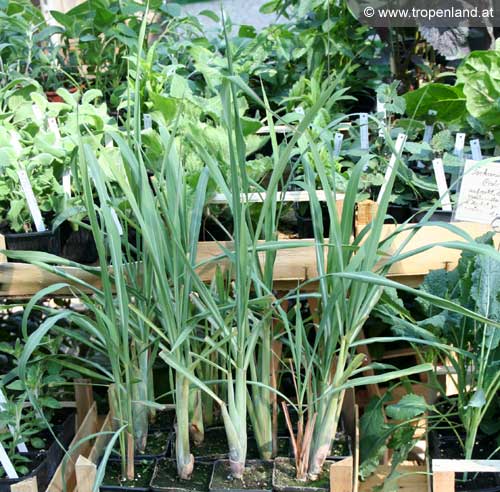 If you hold open with well-stocked garden centers and at street markets, the eye is to be soon found, where it can buy a lemon grass plants. |
genus Info:
The genus includes about 50 species, which are located mainly in South and Southeast Asia. The economically most important representative is C. citratus . The species name is derived from citratus lemon scent from the plant.
Cymbopogon flexuosus  | East Indian lemon grass, East Indian or Malabargras |
Cymbopogon nardus  | |
Cymbopogon martinii  | |
Cymbopogon winterianus  | |
| | |
| | |
Text: Dominik re
0 comments:
Post a Comment